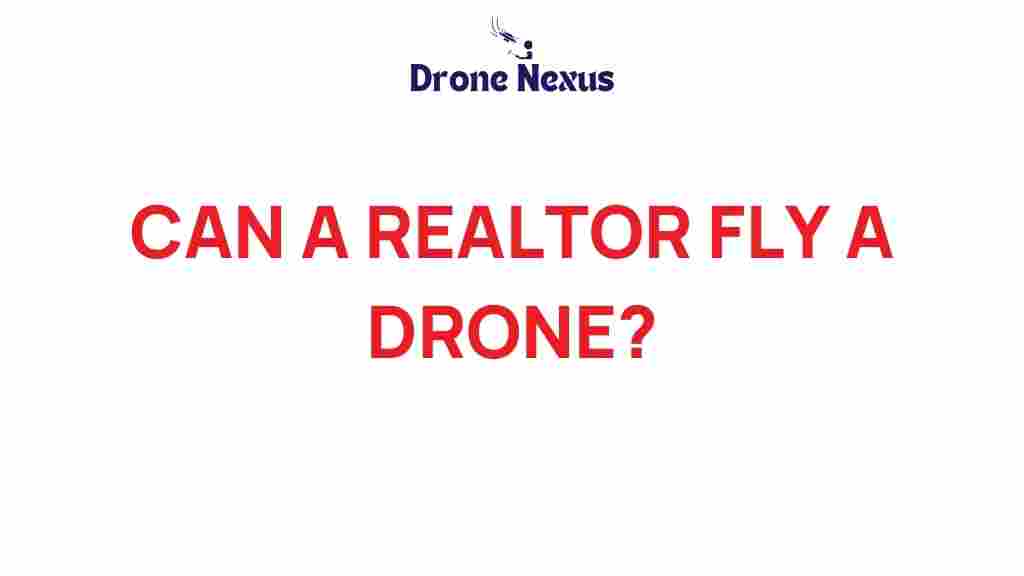Can a Realtor Fly a Drone?
In recent years, the real estate industry has embraced innovative technologies to enhance property marketing and client engagement. One such technology that has gained significant traction is the use of drones. But can a realtor fly a drone? The answer is yes, but there are specific regulations and benefits that they should consider. This article explores the surprising benefits of drone usage for realtors and provides insights into how they can effectively implement this technology in their business operations.
The Growing Trend of Drones in Real Estate
Drones are transforming the way realtors market properties, allowing for stunning aerial photography and videography that provides a unique perspective on listings. This technology not only highlights the property’s features but also showcases the surrounding area, making it an invaluable tool in a realtor’s arsenal. Here are some statistics that underscore the importance of drones in real estate:
- Over 80% of realtors using drones reported that it helped them win listings.
- Properties listed with drone footage sell 68% faster than those without.
- More than 90% of buyers prefer listings with aerial photos.
Benefits of Drones for Realtors
Utilizing drones in real estate offers several advantages, including:
- Enhanced Marketing: Aerial views of properties can attract more potential buyers by providing stunning visuals that traditional photography cannot match.
- Comprehensive Property Showcasing: Drones can capture the entire property, including the roof, backyard, and surrounding landscape, giving buyers a complete picture.
- Time Efficiency: Drones can cover large areas quickly, allowing realtors to gather high-quality footage in a fraction of the time it would take to do so manually.
- Increased Engagement: Video tours featuring drone footage often receive more views and engagement on social media platforms, expanding the realtor’s reach.
Step-by-Step Guide: How Realtors Can Use Drones
If you’re a realtor considering the use of drones, follow these steps to get started:
1. Research Local Regulations
Before flying a drone, it’s essential to understand the regulations governing drone usage in your area. In the United States, realtors must comply with the Federal Aviation Administration (FAA) regulations, which include:
- Obtaining a Remote Pilot Certificate through the FAA.
- Registering the drone if it weighs more than 0.55 lbs.
- Adhering to operational guidelines, such as flying below 400 feet and maintaining visual line-of-sight.
2. Invest in Quality Equipment
Select a drone that meets your needs as a realtor. Look for features such as:
- High-resolution cameras for clear photos and videos.
- Stability control for smooth footage and images.
- GPS capabilities for precise navigation.
3. Learn How to Operate the Drone
Before you start flying, invest time in learning how to operate your drone effectively. Consider taking online courses or participating in workshops. This will ensure you are comfortable with the controls and can capture the best footage possible.
4. Plan Your Shots
Before heading out to shoot, plan your aerial shots. Consider the following:
- Time of day for optimal lighting.
- Angles that best showcase the property.
- Surrounding areas that may add value to your listing, such as parks or views.
5. Edit Your Footage
Once you have captured your footage, use video editing software to create a polished final product. Ensure that your video highlights the property’s unique features and provides a clear view of the surrounding area.
Troubleshooting Common Drone Issues
As with any technology, drones can encounter issues during operation. Here are some common problems realtors may face and troubleshooting tips:
1. Signal Loss
If your drone loses connection to the remote controller, it may return to its last known position or land automatically. To prevent this:
- Ensure you are within range and have a clear line of sight.
- Check for any potential interference from buildings or trees.
2. Battery Life
Drones have a limited flight time, typically around 20-30 minutes. To avoid mid-air shutdowns:
- Charge your batteries fully before each flight.
- Invest in extra batteries for extended sessions.
3. Weather Conditions
Weather can significantly affect drone performance. If conditions are windy or rainy, it’s best to postpone your flight. Always check the weather forecast before heading out.
Internal and External Resources
For realtors looking for more information on drone regulations and best practices, consider visiting the FAA’s official website. Additionally, you can find valuable insights from fellow realtors at NAR’s website.
Conclusion
In conclusion, a realtor can indeed fly a drone, provided they adhere to local regulations and obtain the necessary certifications. The benefits of using drones in real estate marketing are substantial, offering enhanced visuals that can capture the attention of potential buyers and help properties sell faster. By investing in quality equipment, learning how to operate it effectively, and planning your shots, you can leverage this technology to elevate your real estate business. Embrace the future of property marketing and discover the surprising advantages that drones can bring to your realtor services.
This article is in the category Technology and created by DroneNexus Team
